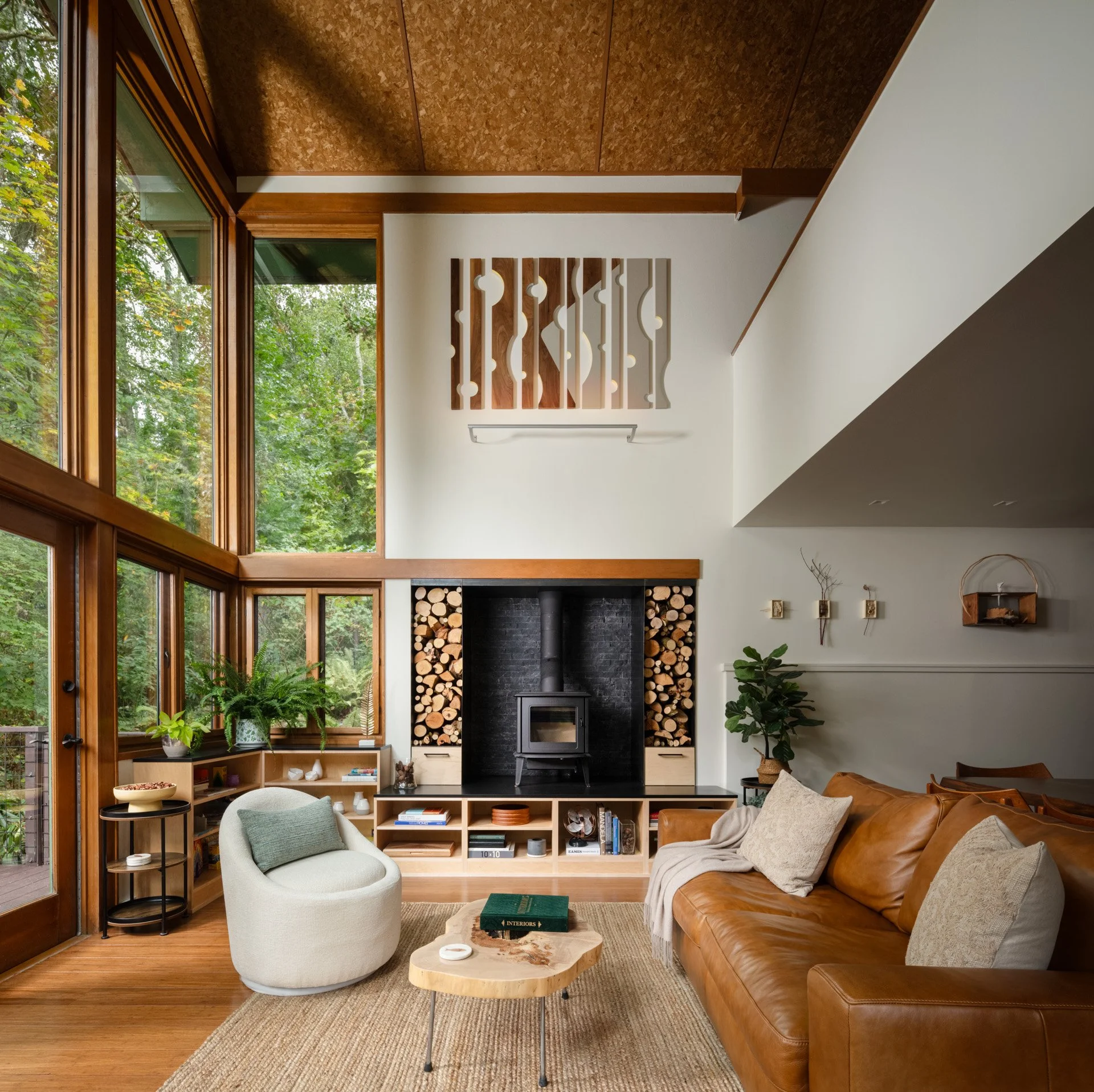The Rise of Modern Architecture in the Pacific Northwest: A Sustainable Approach
History of modern architecture in the Pacific Northwest
Modern architecture in the Pacific Northwest has been deeply influenced by the region's unique landscape and climate. Architects have embraced sustainable practices, incorporating natural materials and energy-efficient designs into their buildings. The history of modern architecture in the Pacific Northwest dates back to the early 20th century, with pioneers like John Yeon and Paul Thiry leading the way. Their innovative designs incorporated elements of nature, such as large windows to bring in natural light and sweeping views of the surrounding environment. This sustainable approach continues to shape contemporary architecture in the region, with a focus on blending modern aesthetics with environmental consciousness.
Characteristics of modern architecture
Modern architecture in the Pacific Northwest focuses on blending natural elements with contemporary design. It often features clean lines, large windows to bring in natural light, and sustainable materials to minimize environmental impact. Open floor plans are common, creating a sense of spaciousness and flow within the living space. Flat or low-pitched roofs are also typical, contrasting with traditional peaked roofs. Additionally, modern architecture in the Pacific Northwest emphasizes indoor-outdoor living, with many homes incorporating outdoor spaces like decks or patios seamlessly into the design.
Incorporating sustainability in modern architecture
Many architects in the Pacific Northwest are now prioritizing sustainability in their modern architectural designs. They focus on using eco-friendly materials and energy-efficient technologies to reduce the environmental impact of buildings. Green roofs and solar panels are common features incorporated into these designs to promote energy efficiency. Additionally, using recycled materials and implementing water conservation techniques are key strategies in creating sustainable buildings. By blending innovation with environmentally conscious practices, architects are shaping a more sustainable future for modern architecture in the Pacific Northwest.
Prominent modern architects in the Pacific Northwest
The Pacific Northwest is home to many prominent modern architects who have made significant contributions to sustainable architecture. Here are a few architects you should know about:
Tom Kundig: Known for his innovative designs that blend industrial materials with natural elements, creating unique and sustainable structures.
Michelle Kaufmann: A leader in eco-friendly design, specializing in prefabricated homes that minimize environmental impact.
Ray Kappe: Renowned for his pioneering work in green architecture and sustainable urban planning, promoting harmony between buildings and nature.
David Miller: We’re a bit biased here because Sean worked with Dave for five years at Miller Hull Architects. David is a skilled architect, known for his contributions to sustainable and innovative architectural designs, such as the Bullit Center.
These architects have greatly influenced the modern architectural landscape in the Pacific Northwest, emphasizing sustainability and innovation in their designs.
Innovations in sustainable architecture practices
Sustainable architecture practices focus on reducing a building's environmental impact while creating a healthy space for occupants. Innovations in this field include using renewable resources like bamboo and recycled materials. Additionally, architects are integrating energy-efficient systems for heating, cooling, and lighting, aiming to decrease overall energy consumption. Green roofs and rainwater harvesting systems are gaining popularity as ways to enhance sustainability by reducing stormwater runoff and providing natural insulation.
Impact of sustainable materials used in modern architecture
Modern architects in the Pacific Northwest prioritize sustainability, using materials that are environmentally friendly and energy-efficient. Some common sustainable materials used in modern architecture include bamboo, reclaimed wood, recycled glass, and metal. These materials contribute to reducing the environmental impact of construction while promoting a healthier and greener living environment.
Modern architecture focuses on incorporating sustainable materials and energy-efficient designs. We also design buildings to maximize natural light and ventilation, reducing the need for artificial lighting and air conditioning. By integrating these sustainable practices, modern architecture in the Pacific Northwest aims to minimize its environmental impact and promote a greener future.
Modern architecture projects in the Pacific Northwest
The Pacific Northwest has seen a surge in modern architecture projects that prioritize sustainability and innovation. Architects in the region focus on using eco-friendly materials and designing energy-efficient buildings. Here are some key points about modern architecture projects in the Pacific Northwest:
Emphasis on sustainability and innovation
Use of eco-friendly materials
Designing energy-efficient buildings.
Future trends in sustainable modern architecture
Architects are increasingly focusing on sustainability in modern buildings. The use of eco-friendly materials, energy-efficient designs, and green building practices is becoming more common. Sustainable architecture aims to reduce the environmental impact of buildings while creating healthy and comfortable spaces for occupants. Key trends in sustainable modern architecture include:
Integration of renewable energy sources like solar panels
Incorporation of green roofs and vertical gardens for natural insulation
Use of recycled and locally sourced materials for construction
Implementation of water conservation strategies such as rainwater harvesting
By adopting these future trends, architects aim to create buildings that have minimal negative effects on the environment and promote a healthier, more sustainable way of living.
Conclusion: The lasting influence of modern architecture in the Pacific Northwest
Modern architecture in the Pacific Northwest has left a significant mark on the region, embracing sustainability and innovative design. Architects in this area have set a trend that prioritizes blending nature with architecture, creating structures that coexist harmoniously with the environment. This approach is not just a passing fad but has influenced architectural practices globally, emphasizing the importance of sustainable building techniques and eco-friendly design principles. The legacy of modern architecture in the Pacific Northwest serves as a testament to the enduring impact of embracing sustainability in architectural endeavors.









Waldron Designs, LLC is passionate about designing spaces rooted in their context and responsive to the natural environment. Are you ready to create sustainable permanence with your home?
GET IN TOUCH!